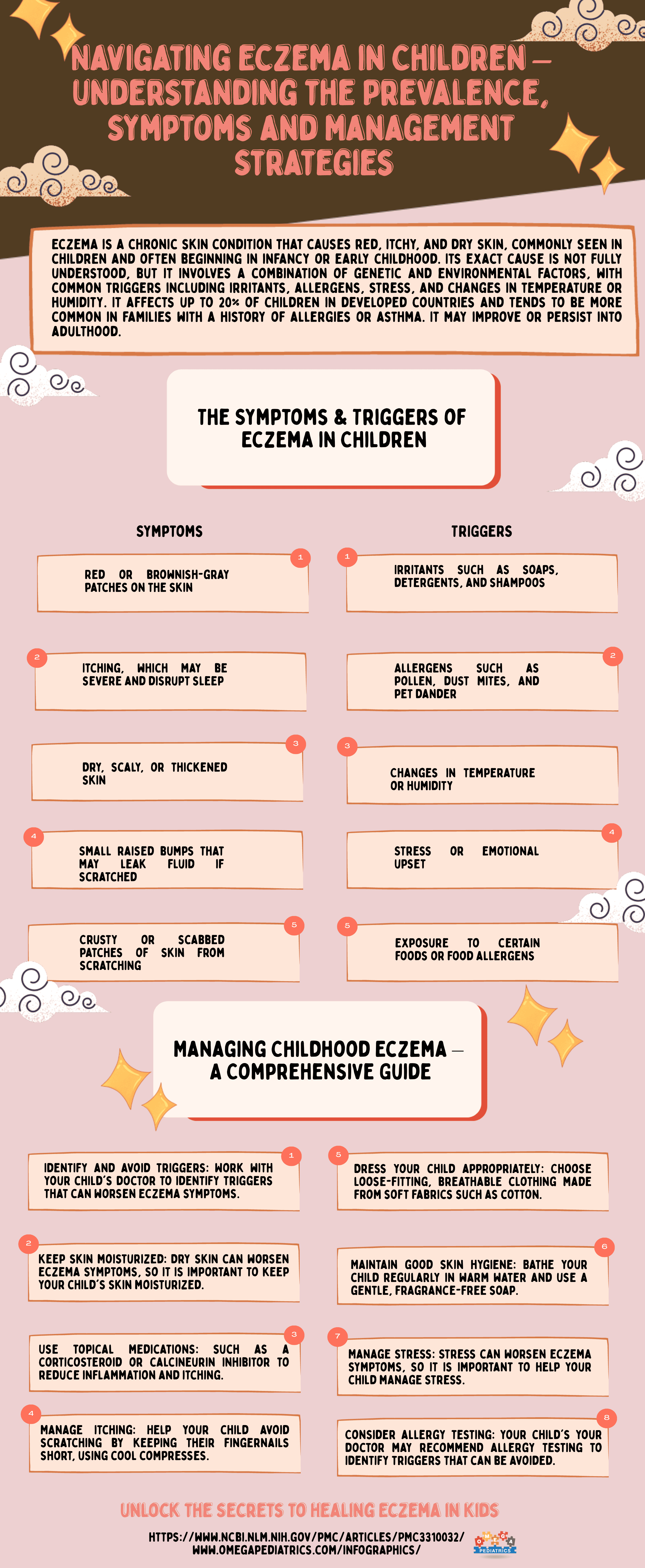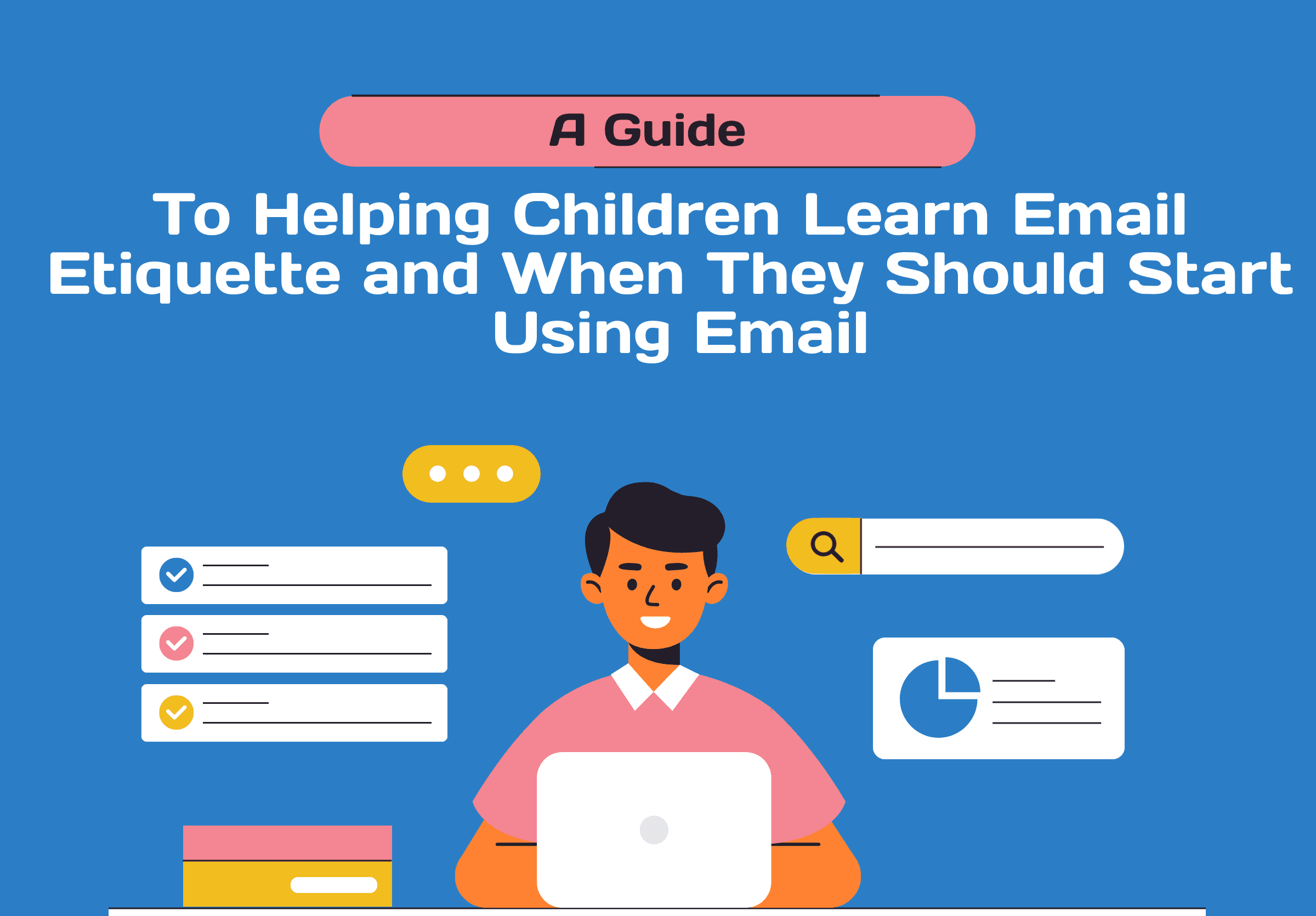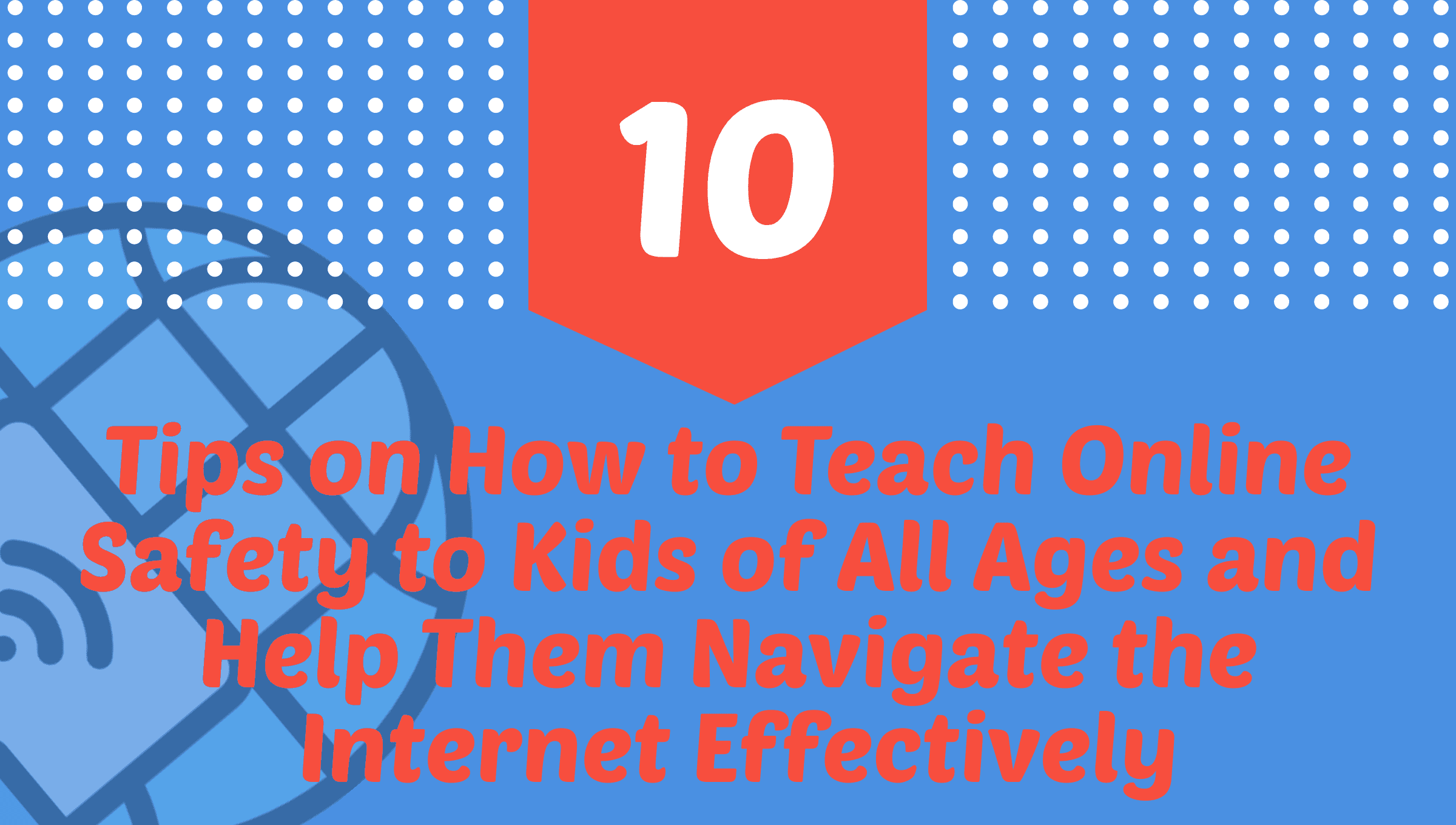
Eczema is a chronic skin condition that causes red, itchy, and dry skin, commonly seen in children and often beginning in infancy or early childhood. Its exact cause is not fully understood, but it involves a combination of genetic and environmental factors, with common triggers including irritants, allergens, stress, and changes in temperature or humidity. It affects up to 20% of children in developed countries and tends to be more common in families with a history of allergies or asthma. It may improve or persist into adulthood.
The Symptoms & Triggers of Eczema in Children
Eczema, also known as atopic dermatitis, can cause a range of symptoms in children. The most common symptoms include:
- Red or brownish-gray patches on the skin
- Itching, which may be severe and disrupt sleep
- Dry, scaly, or thickened skin
- Small raised bumps that may leak fluid if scratched
- Crusty or scabbed patches of skin from scratching
The severity and frequency of symptoms can vary widely from child to child and can be triggered by various factors. Common triggers of eczema in children include:
- Irritants such as soaps, detergents, and shampoos
- Allergens such as pollen, dust mites, and pet dander
- Changes in temperature or humidity
- Stress or emotional upset
- Exposure to certain foods or food allergens
- Clothing or fabrics that irritate the skin
- Bacterial or viral infections
Managing Childhood Eczema – A Comprehensive Guide
Managing childhood eczema can be challenging, but with proper care and treatment, symptoms can be controlled and quality of life can be improved. Here are some steps you can take to manage childhood eczema:
- Identify and avoid triggers: Work with your child’s doctor to identify triggers that can worsen eczema symptoms. Common triggers include irritants, allergens, and changes in temperature or humidity. Once identified, help your child avoid these triggers as much as possible.
- Keep skin moisturized: Dry skin can worsen eczema symptoms, so it is important to keep your child’s skin moisturized. Use a gentle, fragrance-free moisturizer regularly to prevent dryness.
- Use topical medications: Your child’s doctor may prescribe a topical medication such as a corticosteroid or calcineurin inhibitor to reduce inflammation and itching. Follow the doctor’s instructions carefully when using these medications.
- Manage itching: Itching can be a major source of discomfort for children with eczema. Help your child avoid scratching by keeping their fingernails short, using cool compresses to soothe the skin, and using anti-itch creams or lotions.
- Dress your child appropriately: Choose loose-fitting, breathable clothing made from soft fabrics such as cotton. Avoid wool and other fabrics that can irritate the skin.
- Maintain good skin hygiene: Bathe your child regularly in warm water and use a gentle, fragrance-free soap. After bathing, pat the skin dry and apply moisturizer immediately.
- Manage stress: Stress can worsen eczema symptoms, so it is important to help your child manage stress. Encourage relaxation techniques such as deep breathing, meditation, or yoga.
- Consider allergy testing: If your child’s eczema is severe or persistent, your doctor may recommend allergy testing to identify triggers that can be avoided.
By following these steps and working closely with your child’s doctor, you can help manage your child’s eczema and improve their quality of life.
Preventive Measures for Eczema in Children
While managing eczema is crucial, taking preventive measures can also play a significant role in reducing the frequency and severity of flare-ups. Understanding these preventive measures is essential for parents and caregivers. Here are key steps to help prevent eczema in children:
- Choose hypoallergenic products: Opt for hypoallergenic soaps, detergents, and skincare products. These products are formulated to minimize the risk of irritation and allergic reactions, reducing the likelihood of triggering eczema.
- Create a controlled environment: Maintain a stable indoor environment by controlling temperature and humidity levels. Use air purifiers to reduce allergens like dust mites and pet dander. Creating a comfortable and allergen-free space can contribute to preventing eczema episodes.
- Encourage a healthy diet: While specific dietary triggers can vary among individuals, promoting a well-balanced and nutritious diet can positively impact overall health. Ensure your child receives essential nutrients that support skin health, such as omega-3 fatty acids found in fish, flaxseeds, and walnuts.
- Protect against infections: Eczema-prone skin is more susceptible to infections. Teach your child good hygiene practices, including regular handwashing, to reduce the risk of bacterial or viral infections that can exacerbate eczema symptoms.
- Use appropriate clothing and bedding: Choose breathable, natural fabrics for your child’s clothing and bedding. Avoid tight-fitting clothes and opt for soft materials like cotton to minimize skin irritation. Additionally, wash bedding and stuffed animals regularly in hot water to eliminate dust mites.
- Promote emotional well-being: Emotional stress can contribute to eczema flare-ups. Foster a supportive and positive environment for your child, addressing any emotional challenges they may face. Open communication and emotional support can help manage stress and its impact on eczema.
Conclusion
Eczema in children requires a comprehensive approach that includes both management and preventive measures. By identifying triggers, practicing good skincare, and creating a supportive environment, parents and caregivers can significantly improve the quality of life for children with eczema. Additionally, emphasizing preventive strategies can reduce the frequency of flare-ups, providing long-term relief and comfort for those affected by this chronic skin condition. Always consult with healthcare professionals for personalized advice tailored to your child’s specific needs and condition.



